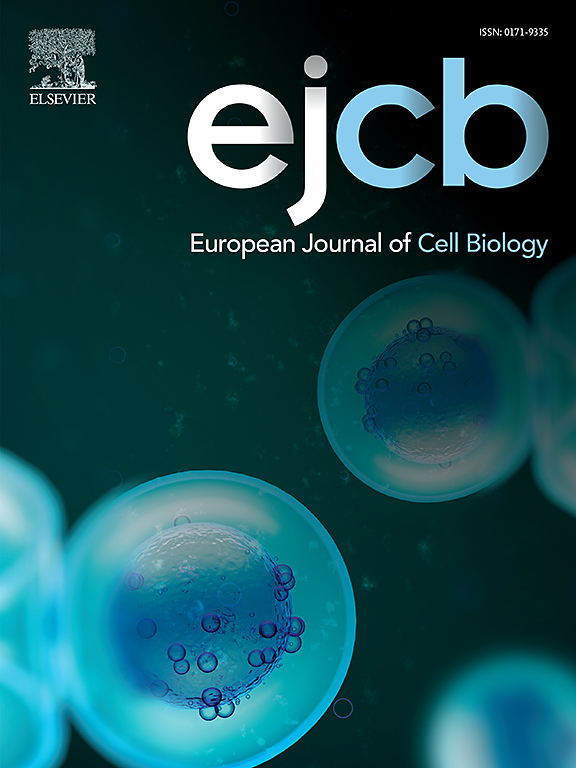Integrated phenotypic and transcriptomic characterization of desmin-related cardiomyopathy in hiPSC-derived cardiomyocytes and machine learning-based classification of disease features
IF 4.3
3区 生物学
Q2 CELL BIOLOGY
引用次数: 0
Abstract
Desmin-related diseases are characterized by skeletal muscle weakness, cardiomyopathy, and respiratory dysfunction due to mutations in the desmin gene (DES), which encodes a protein essential for muscle cell integrity. This study investigates the effects of a pathogenic desmin mutation (DESE439K) in human cardiomyocytes derived from human induced pluripotent stem cells (hiPSCs) obtained from a patient carrying the DESE439K mutation, compared to cardiomyocytes derived from hiPSCs of three healthy donors. To further validate our findings a genome edited cell line has been obtained following the insertion of the mutation in a control hiPSC line. Using advanced technologies, including transcriptomics and phenotypic machine learning algorithms, we analyzed how this mutation disrupts cellular function and contributes to disease phenotypes. Our findings reveal that cardiomyocytes carrying DESE439K exhibit cytoplasmic protein aggregation, mitochondrial and sarcomere defects, and contractile dysfunctions, highlighting key phenotypic defects in desmin-related cardiomyopathy. Finaly, we developed a machine learning prediction model to classify cellular phenotypes, which can be used for translational research, including drug candidate screening. This research opens new avenues for understanding the molecular mechanisms of desmin-related cardiomyopathies and fosters the development of novel therapeutic strategies.
hipsc衍生心肌细胞中desmin相关心肌病的综合表型和转录组学特征和基于机器学习的疾病特征分类
desmin相关疾病的特征是由于desmin基因(DES)突变引起的骨骼肌无力、心肌病和呼吸功能障碍,desmin基因编码一种对肌肉细胞完整性至关重要的蛋白质。本研究调查了从携带DESE439K突变的患者身上获得的人诱导多能干细胞(hiPSCs)衍生的人心肌细胞中病原性DESE439K突变的影响,并将其与从三名健康供体的hiPSCs衍生的心肌细胞进行了比较。为了进一步验证我们的发现,在对照hiPSC系中插入突变后,获得了基因组编辑细胞系。使用先进的技术,包括转录组学和表型机器学习算法,我们分析了这种突变如何破坏细胞功能并导致疾病表型。我们的研究结果表明,携带DESE439K的心肌细胞表现出细胞质蛋白聚集、线粒体和肌节缺陷以及收缩功能障碍,突出了DESE439K的心肌细胞相关心肌病的关键表型缺陷。最后,我们开发了一个机器学习预测模型来对细胞表型进行分类,该模型可用于包括候选药物筛选在内的转化研究。本研究为理解心肌病的分子机制开辟了新的途径,并促进了新的治疗策略的发展。
本文章由计算机程序翻译,如有差异,请以英文原文为准。
求助全文
约1分钟内获得全文
求助全文
来源期刊

European journal of cell biology
生物-细胞生物学
CiteScore
7.30
自引率
1.50%
发文量
80
审稿时长
38 days
期刊介绍:
The European Journal of Cell Biology, a journal of experimental cell investigation, publishes reviews, original articles and short communications on the structure, function and macromolecular organization of cells and cell components. Contributions focusing on cellular dynamics, motility and differentiation, particularly if related to cellular biochemistry, molecular biology, immunology, neurobiology, and developmental biology are encouraged. Manuscripts describing significant technical advances are also welcome. In addition, papers dealing with biomedical issues of general interest to cell biologists will be published. Contributions addressing cell biological problems in prokaryotes and plants are also welcome.
 求助内容:
求助内容: 应助结果提醒方式:
应助结果提醒方式:


